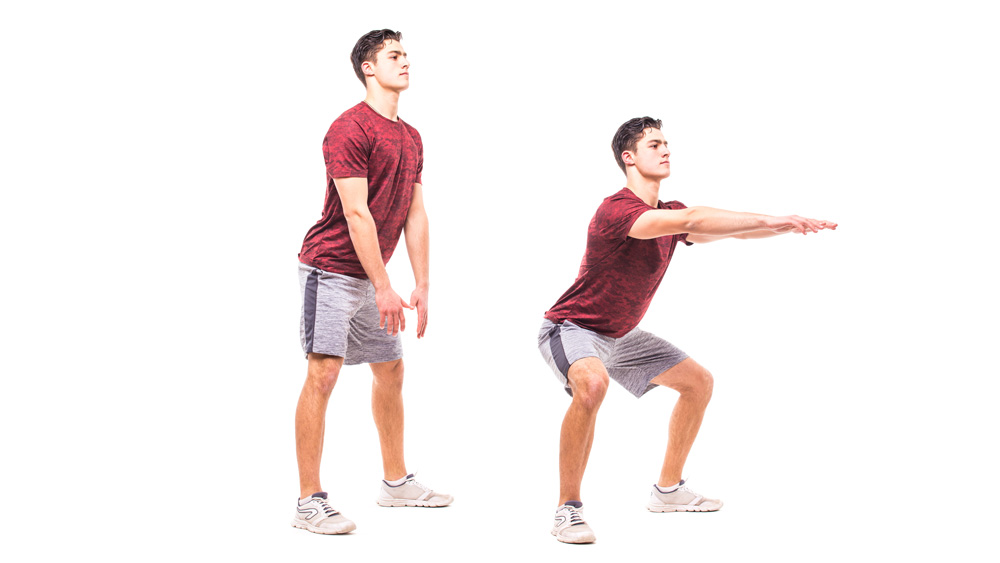How To Do The Sumo Squat
Target your inner thighs with this variation on the classic squat

The unweighted squat, or air squat, is pretty much as good as bodyweight exercises get, and it’s undoubtedly one of the best leg exercises you can do. However, it’s worth mixing up your approach to the move frequently, not only to keep your workout interesting but also to vary the muscles you’re targeting with your squats or increase the challenge involved, which you can do with the goblet squat or Bulgarian split squat.
Another great variation to try is the sumo squat, which you can do with or without weights and which changes the target muscles.
Sumo Squat Benefits
When was the last time you considered your inner thighs and whether they are getting enough attention during your workouts? It probably wasn’t all that recently, if ever, but the sumo squat will change that for you because it’s a great inner thigh exercise that also works your glutes.
All the lower-body muscles you target with the classic squat still get some attention too, so don’t worry that the quads are going unchallenged. The sumo squat also works the core, which you should be keeping engaged to ensure your upper body is in the right position throughout the move.
How To Do The Sumo Squat
Start in a standing position with your feet wide apart and your toes pointing at 45° angles. By wide we mean wider than shoulder-width apart – around a foot (30cm) beyond your shoulder on each side.
Drop into a squat, bending at the hips and knees and sitting back. Keep your chest up and knees out. Keep lowering until your thighs are parallel to the ground, or even slightly below parallel if you have it in you. Then stand back up to the starting position. Make sure you don’t lift your feet off the ground or round out your lower back as you perform the sumo squat.
Sumo Squat Variations
Weighted sumo squat

Once the unweighted version of the sumo squat fails to thoroughly exhaust your thighs and glutes, it’s time to add some weight. You can do this in any manner you like, but we recommend holding a kettlebell or dumbbell with both hands in front of you so it hangs down towards the floor. This means you’ll also know if you’re going deep enough with your squats – the weight should almost touch the ground.
Sign up for workout ideas, training advice, reviews of the latest gear and more.
Sumo squat to kettlebell swing
If you’re using a kettlebell for your sumo squats you can easily combine the exercise with a kettlebell swing. Your stance for the latter will be a little wider than normal, which places more emphasis on the inner thighs, just as the sumo squat does compared with the standard squat. Holding the kettlebell in both hands in front of you, drop into a shallow sumo squat and swing the weight back between your legs. Thrust your hips forwards and swing the kettlebell up to shoulder height as you stand back up, then swing it back down under control.
Sumo jump squat
If you don’t have weights to hand but want to increase the difficulty of the sumo squat while also ramping up your heart rate, opt for the jumping version of the move. Instead of coming back up to standing from your squat, drive back up explosively and jump straight up. Land softly and go straight into another squat

Nick Harris-Fry is a journalist who has been covering health and fitness since 2015. Nick is an avid runner, covering 70-110km a week, which gives him ample opportunity to test a wide range of running shoes and running gear. He is also the chief tester for fitness trackers and running watches, treadmills and exercise bikes, and workout headphones.
